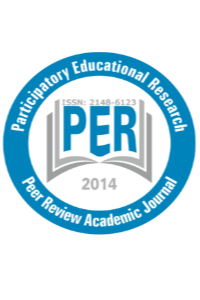
Participatory Educational Research
Yazarlar: Neşet MUTLU
Konular:Eğitim, Bilimsel Disiplinler
Anahtar Kelimeler:Interactive white boards,Attitude,Foreign language teaching
Özet: In this study, researcher tried to understand Foreign Language Teaching (English Language Teaching – ELT, and German Language Teaching – GLT) students’ and teachers’ attitudes on interactive whiteboard (IWB) that they would use in foreign language teaching. A descriptive study was selected by using survey method. In this respect, data were gathered from 210 ELT and GLT students and 8 teachers from these two language teaching departments in Erciyes University. Two questionnaires prepared by Manny-Ikan, Tikochinski, Zorman and Dagan (2011) were administered to understand attitudes of students and teachers: Teacher Attitudes Questionnaire (TAQ) and Students Attitudes Questionnaire (SAQ). According to results; students mostly see learning via the IWB is enjoyable, easier, understandable, favourable, and interesting. Moreover, teachers mostly expressed that instruction with IWB is more enjoyable, brings more workload, allows better access to up-to-date learning materials, and contributes teachers’ professional development.